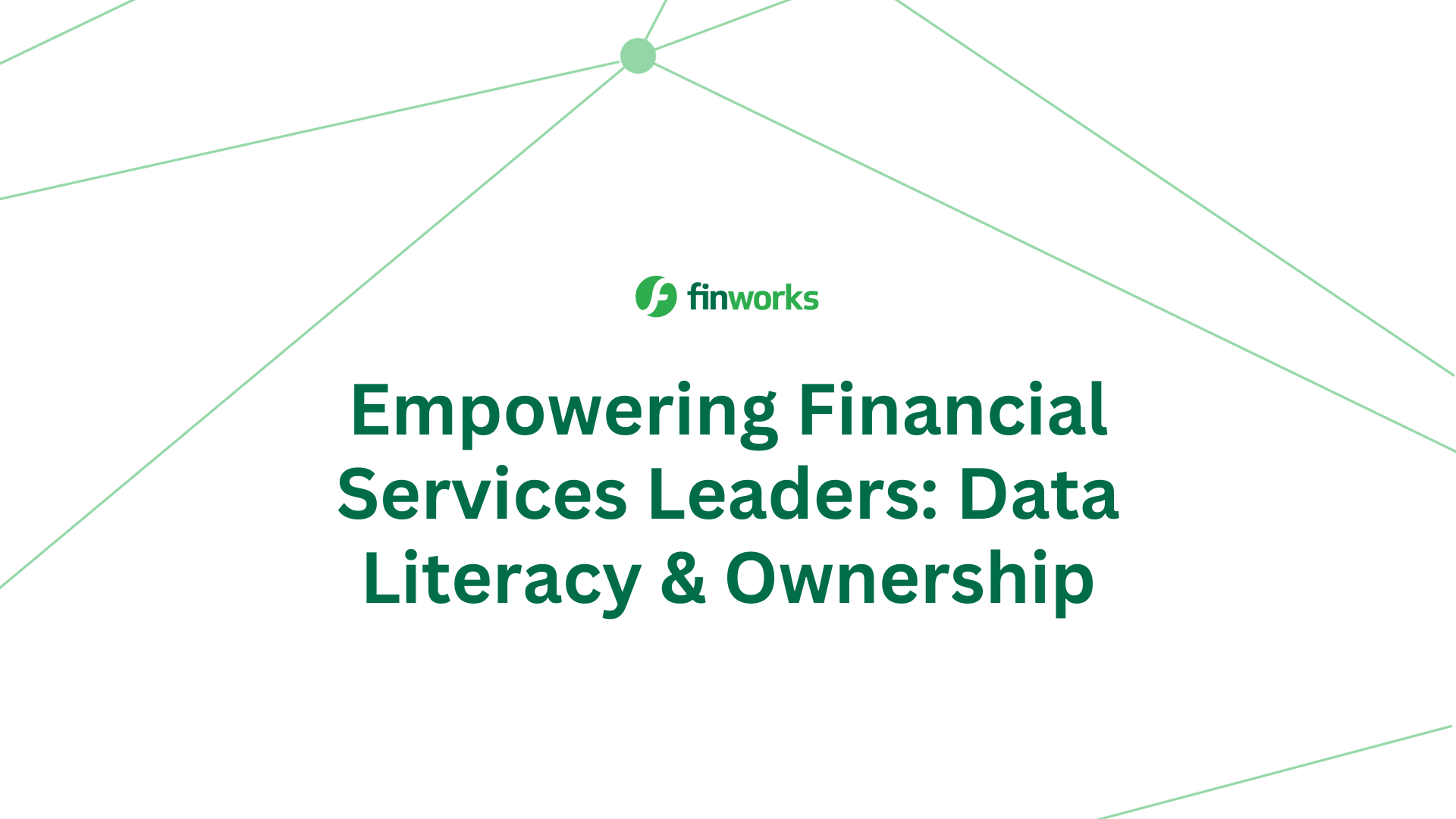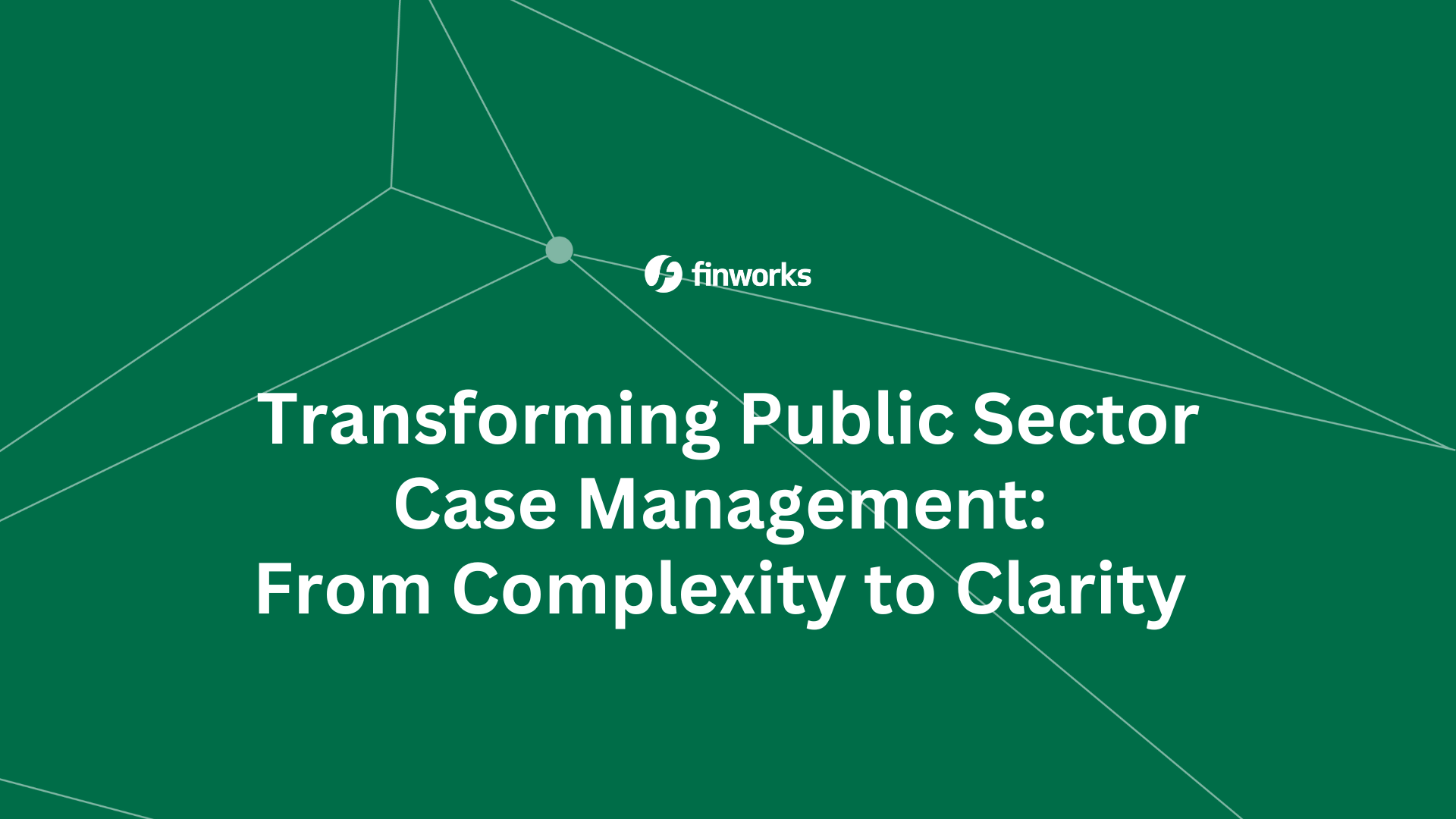Strengthening Data Governance: Mitigating Threats in Financial Institutions
Financial institutions are recognising the potential benefits of their data, but they are struggling with the challenge of dealing with their legacy data systems. The financial service sector must improve its data governance and compliance to ensure its data can live up to its potential.
In this article, we will explore the inherent threats and outline effective measures to mitigate risks and protect sensitive information. By strengthening data governance, financial institutions can not only fortify their defences but also harness data as a strategic asset for informed decision-making and sustainable growth in an environment where data security is paramount.
Data Governance in Finance Today
Data governance in finance today refers to the framework and set of workflows in financial institutions, such as investment firms, banks and insurance companies, use to manage their data effectively. It involves the policies, procedures, and controls to ensure data is accurate, secure, compliant with regulations, and used efficiently to support the institution’s operations. Data governance has become increasingly important in the finance sector due to the growing volume of data, stricter regulations, and the need for better risk management.
How Data Governance is Essential to Managing Data Risk
Data is a vital asset for any business and must be actively managed through technology and people. With the development of open-source software, data management options such as a cloud or data lake, as well as big data analytics technology, have evolved.
However, data curation, analysis, processing, and storage all carry a number of threats. To mitigate these risks, organisations should adopt a comprehensive data risk management framework that includes identifying potential risks and implementing measures to reduce them.
Risks Inherent with Your Data
From a regulatory standpoint, data risk might be significant. Organisations in the financial services industry must follow guidelines from standard setters such as the Basel Committee on Banking Supervision to guarantee that risk management activities are incorporated into the development of models used in crucial business decisions. Another risk factor is consumers’ increased concern about privacy and the usage of their data, which has resulted in the introduction of regulations requiring compliance.
Governance and Enterprise Risk Management
Establishing a good data governance programme in line with the goals and objectives of your business’s enterprise risk management department will assist you in using data as an asset while balancing data-driven business practices with regulatory and compliance needs. Data governance contributes to enterprise risk management efforts by identifying risks, defining rules and controls, putting those policies and controls into action, and having a framework for continuing monitoring.
Data Quality Implications
The quality and availability of your company’s data have an impact on your business risk. The perception of poor data quality is sometimes produced by missing or incorrect data, inconsistent definitions used throughout your organisation, data that is not available when people need it, and various sources with no single source of truth to define and communicate data. Data constraints can result in poor decisions and missed business opportunities to expand and sustain your company’s competitive advantage.
Managing Data Risk with Guidelines and Controls
To address these challenges, you should develop and implement processes for identifying data-related threats and establishing controls to reduce risk exposure associated with data. The initial stage in the process is to identify inherent data risk, which happens when controls are not in place or when mitigation techniques are not in place. The best approach to achieve these objectives is through a critical data governance function that acknowledges the risks posed to your firm and incorporates risk mitigation techniques.
Monitoring Data Controls
The final step in managing data risk is to continuously monitor and report on the effectiveness of the established controls, as well as to assess them regularly to ensure they are still effective. When you have an effective data governance programme in place, it supports your organisation’s risk management initiatives.
Methodology for Data Risk Mitigation
Mitigating other data-related risks must also consider the people, process, technology, and data methodology.
People Risk: This type of risk has lately increased due to increased staff turnover and the global labour shortage, which is causing businesses to develop innovative strategies to attract and retain people. When organisations lose cultural and institutional knowledge about their data assets, employee instability can impact the integrity, availability, and comprehension of business data.
Process risk: When processes are not effectively planned or implemented, they can lead to operational issues, costly remediation, and other inefficiencies that spread across the organisation. Third-party data and data-sharing agreements are one area of data-related process risk when acquiring data to improve your capabilities. Without robust processes in place to regulate the terms of use for newly collected information, you risk exposing your business to intellectual property, privacy, and confidentiality challenges, as well as legal risks.
Technology risk: Inefficiencies and gaps in your data management goals are caused by your inability to establish, build, configure, maintain, and protect your system architecture and infrastructure. A large percentage of cyber security incidents reported are the result of carelessness in the configuration of a business system. It is critical to address security misconfigurations promptly as they can lead to serious security breaches, such as unauthorized access to sensitive data or unauthorized control of systems or networks.
Building Blocks for a Robust Data-Centric Risk Mitigation Framework
Creating a data-centric risk mitigation framework is crucial to protect sensitive data and comply with data regulations. To establish this framework, several key building blocks are essential:
Defining Key Performance Indicators
Key Performance Indicators (KPIs) are metrics that help assess the effectiveness of data risk mitigation efforts. Organisations need to define KPIs that measure data security, compliance, and incident response.
Risk reporting
Risk reporting is a crucial aspect of data operations. By ensuring accurate reporting of data risks to the board, programmes that will strengthen data operations can be sponsored. For instance, a 100% compliance goal for data operations would mean that risk management’s objective is to ensure that all compliance-related risks are managed with priority within the tolerance levels. To achieve this, questions regarding acceptable data delinquency levels of customers need to be first identified before being resolved.
Management oversight and commitment
Management oversight and commitment are essential in ensuring that data risk mitigation is a priority. Businesses must have senior management actively involved in risk management. This commitment includes allocating resources, setting policies, and overseeing risk assessment and mitigation efforts.
Governance Models
Different governance models can be used for data risk mitigation. The choice of model depends on the organisation’s size, industry, and specific needs.
Capability-based risk assessment
To handle data-related risks, both quantitative and qualitative risk assessment methodologies are required. A capability-based data risk assessment may be an option. This technique can be utilised in both data risk planning and developing a data risk strategy along the way. A data risk registry incorporating data management, operations, contracts, project management, privacy, and security can be used as a roadmap to assist banks on their initial risk journeys.
Data Governance Framework
Organisations utilise this framework to implement data governance within their organisations. This framework was developed to help diverse stakeholders within the company differentiate between data management and data governance operations. This will enable them to commercialise 100% of the benefits of data.
Finworks Cohesive Approach to Data Governance
A complete data governance framework that includes policies and procedures and a data management lifecycle can assist financial organisations in maintaining a high degree of data integrity, security, and compliance. As a result, risks associated with improper data management are reduced. Financial organisations can then fully leverage their data assets for better decision-making and overall business performance.
Finworks cohesive approach to data governance is designed to create a culture of reliable data management and ensure that data remains an asset, not a liability. In financial services, where data protection and privacy are key concerns, this approach helps organisations safeguard their data, comply with regulations, and build trust with their customers and stakeholders.
Take control of your data. Explore Finworks' data solutions today and transform your data into a valuable asset. Contact us today to get started.

.png)


